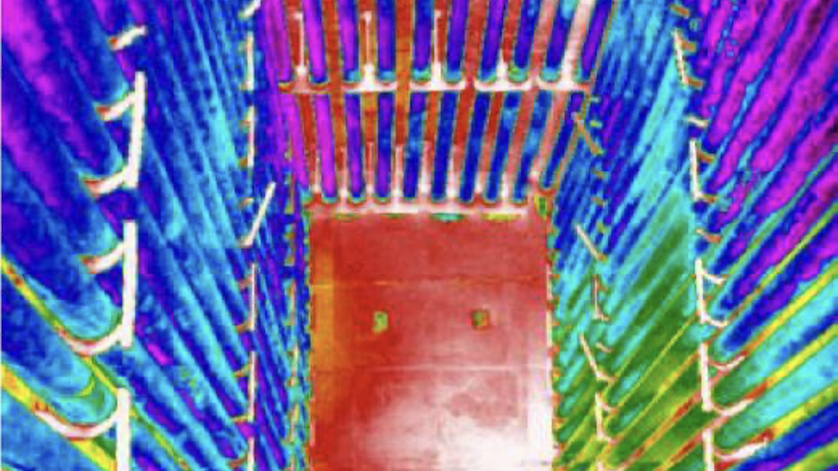
Operators of steam methane reformers have various methods at their disposal for measuring tube wall temperature, but the best solution for accurate and continuous temperature measurement are surface thermocouples.
The furnace tubes of a steam methane reformer (SMR) often see temperatures close to their metallurgical limits. For a top-fired reformer, the top temperature is typically around 1,560°F (850°C), while for a side-fired or terraced-wall reformer it’s up to 1,650°F (900°C). Metal temperatures beyond that can cause irreversible creep, reducing tube lifespan from a typical 10 years to half that – or even down to a few days at around 2,000°F (1,090°C).
For maximum tube life, the tube wall’s temperature should be monitored continuously. Temperature monitoring is also key for catalyst efficiency and plant safety.
Common Methods of Measuring Tube Temperature – and Their Drawbacks
Several types of instruments can be used to measure steam reformer tube wall temperature (TWT). Non-contact methods include optical pyrometers and laser pyrometers. The gold cup pyrometer is a contact method where the probe is inserted through a port and placed directly on the tube. These methods have their drawbacks for TWT monitoring:
- Temperature measurement requires sustained manual effort.
- None of these methods provide continuous temperature monitoring – only occasional.
- For contact methods, there is temperature loss due to the open port, and operators have to quickly take the temperature reading before the tube cools. The amount of temperature loss depends on the size of the furnace and the number of tubes.
- In remote sensing, the surrounding (hotter) furnace environment complicates the temperature reading of the target tube’s emissivity, and corrections have to be made. This can introduce measurement errors.
- It is not always possible to reach the target tube due to the furnace’s geometry.
With today’s technology, surface thermocouples are the most effective method for continuous tube wall temperature measurement, which is especially important during furnace startups.
The Importance of Continuous TWT Monitoring During SMR Startup
Startup is one of the most challenging operations in a steam methane reformer plant. Safety and efficiency can be compromised if these specific steps are not followed:
- Slowly introduce hot nitrogen until the reformer’s temperature is above the dew point. This is to avoid condensation that would compromise the catalyst.
- Once the above dew point temperature is achieved, add saturated steam until the catalyst reduction temperature is reached.
- Fire the burners to achieve the optimum temperature. If too many are fired, tube lifespan can greatly decrease to days, hours, or even minutes.
The best way to control tube wall temperature during SMR startup is to use contact temperature sensors that can transmit data directly and continuously to the control room. Tubeskin thermocouple sensors, located in various areas of the reformer furnace, can quickly alert operators if tubes become overheated. This information allows them to immediately intervene and apply corrective actions before tubes are irreversibly damaged.
The second part of this article continues next week with a case study on how WIKA’s XTRACTO-PAD® helped an SMR plant reach full furnace capacity without compromising tube integrity.


Terrific blog subject and content. A challenging application to achieve accurate measurements that will satisfy the multiple disciplines on site. I have never been convinced non-contact temperature measurement can achieve this.